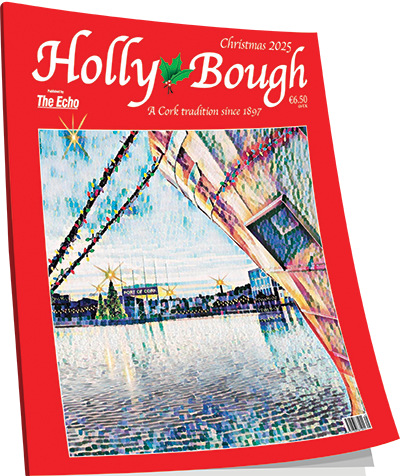Five fabulous plants to have in your garden
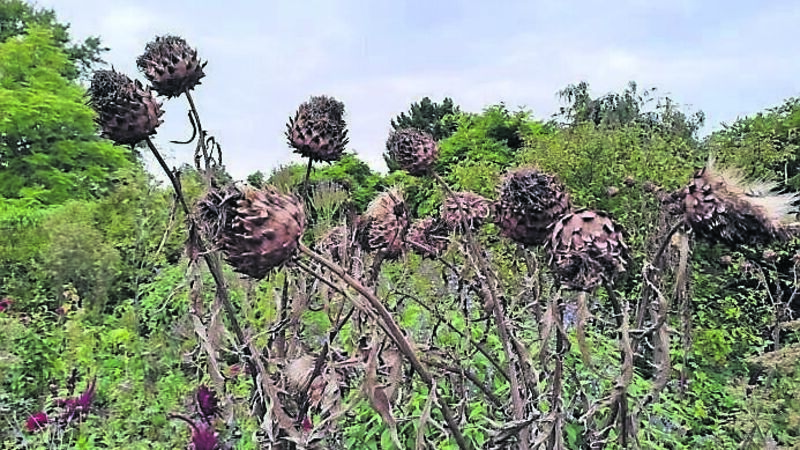
Elegant seed heads of the Globe Artichoke
Early autumn has brought us a good amount of rain already, followed by a sunny spell with dropping night-time temperatures.
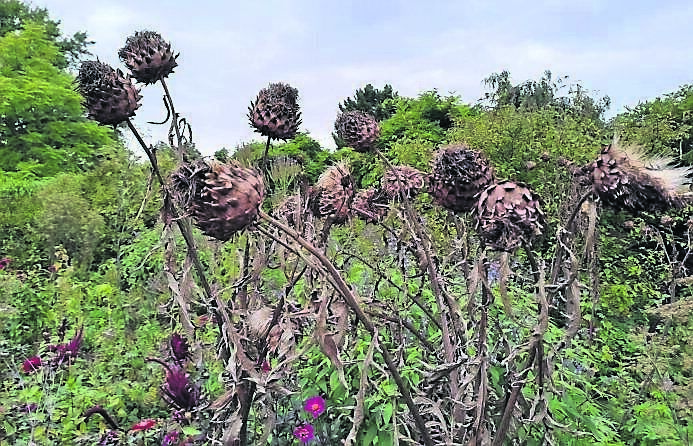
Nearly all the plantings in this garden are very much in the style of the new perennial movement, often associated with horticulturist and plantsman Piet Udolf. The focus lies on naturalistic designs, incorporating plants with their full life cycle. That means dried seedheads and dead flower stalks are left on the plant, giving much appreciated structure for the borders in winter, as well as providing food and ‘housing’ for a variety of animals.
Cynara cardunculus, the globe artichoke, makes a stunning addition to every naturalistic border. Big, silver foliage starts the show in springtime, followed by thistle-like purple flowerheads in the summer, much beloved by bees.
Rudbeckia ‘Goldsturm’ is another great plant, producing masses of yellow, daisy-like flowers in late summer and throughout autumn. Also called ‘black eyed Susan’, it works particularly well in large waves and provides that warm, golden tone we admire in September.
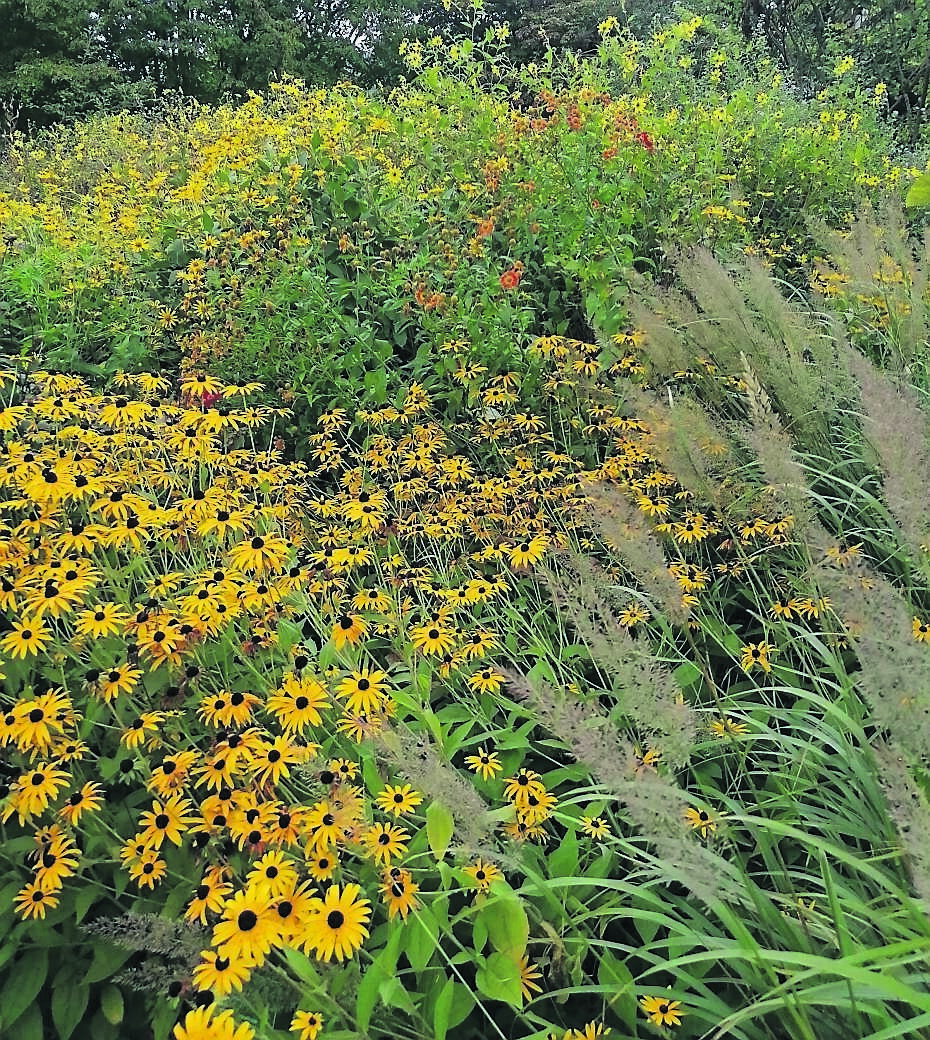
Rudbeckia will perform best in full sun but is able to light up a partially shaded corner as well. Even better, there’s a more compact and smaller variety, ‘Little Goldstar’, that has the same features but works with limited space available. Rudbeckia ‘Goldsturm’ reaches up to a mete, ‘Little Goldstar’ caps at 50cm. Dead flowerheads can be left on the plant and admired in winter on frosty, bright mornings.
A grass that works in both sun and part shade is Calamagrostis brachytricha, or korean feather reed grass. It forms clumps of green, linear leaves, topped by feathery-grey flowers in late summer that sway in the wind and look just superb with morning dew and sunshine on them. The foliage turns yellow in autumn and the whole plant persists into the winter. It works well with Rudbeckias or Symphyotrichums (formerly Asters) and can grow up to 1,20m.
If you’re looking for a perennial well suited to shade, try Bistorta amplexicaulis. It prefers a moist ground and should be kept in check, as it can be a bit spreading if the conditions are right. Oval green leaves up to 25cm are the background for long stalks of pink and white flowers, born in late summer, which can grow up to 1.2 metres. Planted in a wave, it will make a big impression. But even for a smaller corner it will provide interest in shady spots.
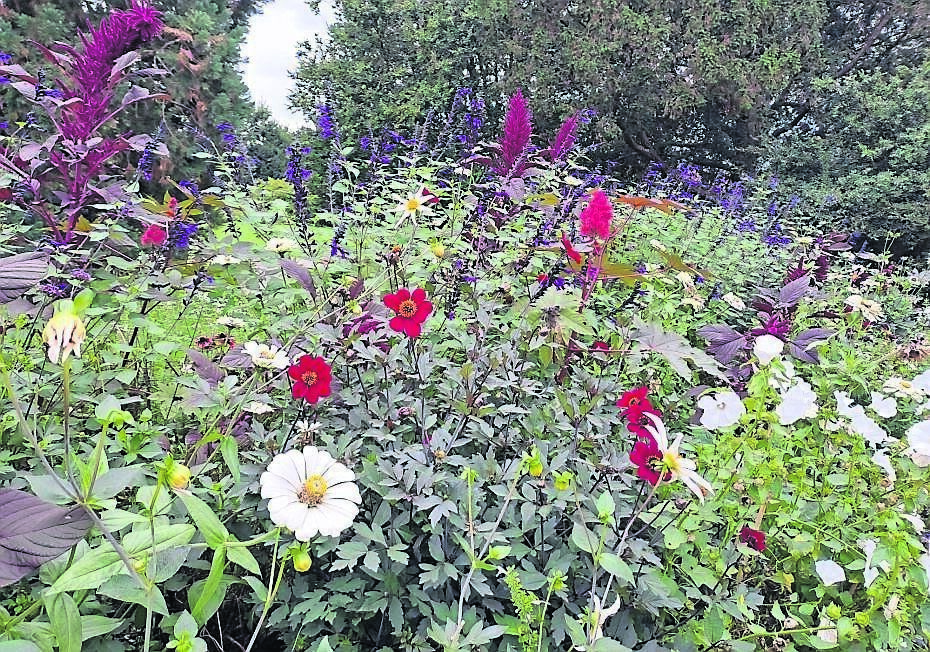
Salvias add a profusion of colour for every planting, so try Salvia ‘Amistad’. Dark purple flowers bloom all summer long up until the first frosts, and while it is borderline hardy, you can easily take cuttings and make sure you save this stunning summer-flowering plant for the next growing season. In any case, it is worth the effort, with its unusual colour and masses of flowers that are loved by bees. It grows up to 1.2 metres and prefers full sun.







 App?
App?



